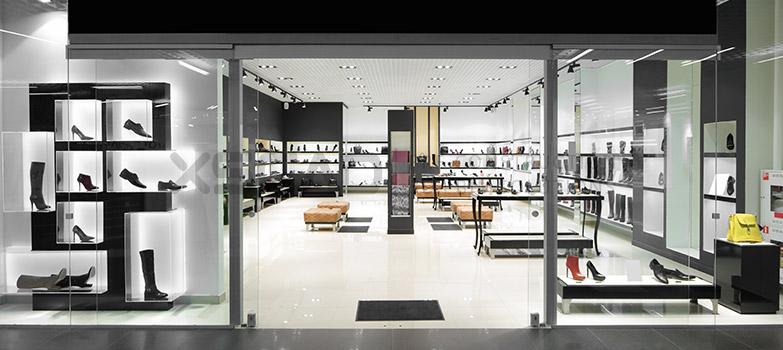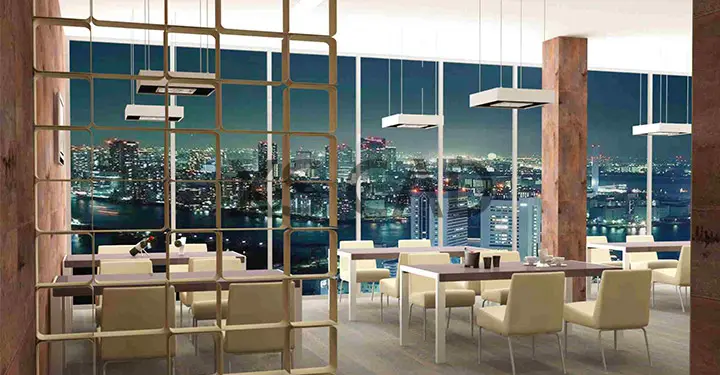A picture paints a thousand words, and a 3D rendered image represents a multitude of visual elements – interior details, exterior details, moods, lighting, fixtures, furniture, textures, etc. For retailers, seeing a view of the proposed interior, exterior, signage and store layout before construction commences can mean saving time and money. It can also communicate to retailers how well their brand is being represented. Tasking an offshore visualisation team to provide high-quality rendered 3D retail images can be a challenging experience, since costly delays and error may result if the retailers are not paired with the right partners.
Visualising a store before it is constructed from a set of specifications and 2D drawings is not easy, neither for designers nor for contractors. One of the major reasons why rendered 3D retail images are used is to provide a glimpse of the store experience and a clear picture of what it will look like before construction. Photorealistic rendered images not only serve as an efficient communication tool for internal design approvals and reviews, they also help construction teams view and understand the proposed layout.
Offshoring retail 3D architectural rendering services is a preferred option, because it provides access to a highly skilled, dedicated offshore team while ensuring considerable costs are saved compared to those incurred while maintaining an in-house team.

However, several factors can determine the success of partnering with an offshore company. To ensure that offshore retail rendering services provide the required results, avoid the following common mistakes:
Lack of Clarity
- Generally, there is a lack of clarity about the expectations from the offshore team.
- The level of involvement by the client, the timelines, number of versions and revisions required and whether the offshore rendering team have allowed for such changes in their fees and timescales must be clear.
- Clear communication helps to ensure smooth project implementation and on-time delivery within budgetary requirements.
- If a client wishes to be involved in every stage of the project, this must be communicated to and discussed with the team.
- Clients must inform the team at the start of the project about specific ideas on lighting, colour schemes, types of fixtures or camera angles.
- Agreeing on timelines and the number of expected versions can help with timely delivery. Retail clients can convey brand guidelines to be highlighted across the project.
Lack of Communication
- Typically, there is one-way communication from the client to the offshore team about timelines, guidelines and project expectations.
- With offshore teams, communication is the key that determines the success of the project. Clients must convey their expectations and understand if such requirements are feasible.
- Opening communication options for the rendering team in an open forum.
- A dedicated offshore team and single point of contact helps with two-way communication and successful collaboration.
Lack of Understanding on Different Roles
- There is often a lack of understanding about the role of renderers compared to that of designers. Rendering is not designing.
- An offshore team that provides 3D architectural rendering services consists of a team of 3D renderers, not designers.
- In-house designers must have details of the furniture, fixtures, material, colour range selection, type of storefronts and the essence of the brand, which can be provided to the renderers.
- The level of detail and amount of direction designers provide will help to determine the result and output received.
Lack of Details
- For the final 3D image to fully represent the ideas in the designer’s vision, as much detail as possible must be provided, helping avoid delays and stay within budget.
- Additional data, such as site photography, interior design information, landscape plans, visual maps, references, images of furniture and texture, can be provided to the renderer.
- Too many options can be confusing, so be specific. Specify day settings – morning, afternoon or evening.
Incomplete Briefings to 3D Renderers
- Often, renderers and designers find it difficult to visualise a project because of the incomplete briefing provided by clients.
- If there is a lack of direction provided, the vision in mind will be difficult for a 3D renderer to visualise, leading to iterations, delays and increase in costs.
- Inform renderers of the store layout, finishes, furniture, fittings, paint colour selections, interior photography, design style guides, storefront and exterior landscape requirements.
- Avoid delays and higher costs with a detailed briefing to 3D renderers when handing over a project.
Reviewing Final Renders
- In many cases, a final render is created for review and feedback, which can be time-consuming and can require more resources, a potential inconvenience for different stakeholders.
- By using pilot renders, considerable time can be saved, as the pilot renders are created in minutes rather than the hours it takes to produce a final high-quality image.
- A pilot render can be used to check if details are rendered as per requirements and the essence of the store and brand guidelines are retained.
- A library of equipment and finishes can be created to ensure the standardisation of finishing and so that applicable codes are maintained throughout the project.
Improper Review of Images
- When several stakeholders, such as the lead designer, head of design, senior executives and even a managing director, review the first draft of rendered 3D retail images individually, it may produce confusing feedback and a lack of unified direction and understanding of the entire project.
- A single and thorough review by various stakeholders collectively is necessary to ensure all changes that are required happen with a minimum number of iterations.
- The whole team should review the image thoroughly, ideally together.
- Consider if the finishes are correct, the lighting fixtures are positioned accurately, the colour scheme is maintained, the interior photography and exterior storefront and landscape features are appropriate and other design and styling features are maintained as per guidelines to ensure a detailed review.
Improper Feedback
- When providing feedback, on many occasions, vague references have led to misinterpretation of changes required and a delay in delivery schedules.
- Clear feedback on the pilot render is necessary to ensure that the final render is delivered on time.
- Providing visual references is always useful for the renderer to understand what needs to be changed.
- Instead of saying the furniture or fixtures are not right, provide an appropriate image.
- If the light setting is unsatisfactory, clearly state the problem, such as too much glare of the sun or the spotlight on a chair needs to focus on the display next to it.
- A ‘redlined’ image to highlight incorrect details and add specific comments on the pilot render works perfectly in detailing feedback clearly.
- Proved an itemised checklist of all elements that need editing.
- With proper, detailed feedback, the final render can be produced with the least number of iterations, saving time.
Keeping in mind the above aspects, the initiative to source offshore rendered 3D retail images from outsourced visualisation services ultimately depends on the chosen strategic partner. By offshoring retail 3D rendering, besides the advantage of cost-effectiveness, high-quality rendered 3D retail images can be obtained to market and construct the retail project on time and within budgetary requirements.
Capitalising on a collaborative environment ensures that all stakeholders can efficiently plan and implement the retail project. With access to a dedicated offshore CAD team and the new technology they use, sophisticated, photorealistic rendered images and real-time 3D store experiences can be created by using virtual reality models, to make design approvals easier and faster than ever before.
XS CAD has valuable experience as a retail 3D rendering service provider, delivering BIM modelling services, architectural design services and 3D modelling for stores and rendered 3D retail images for global firms. Our range of services for architects, contractors and retailers across the world include 2D retail drafting, 3D modelling services, 3D BIM modelling and 3D retail rendering services.



